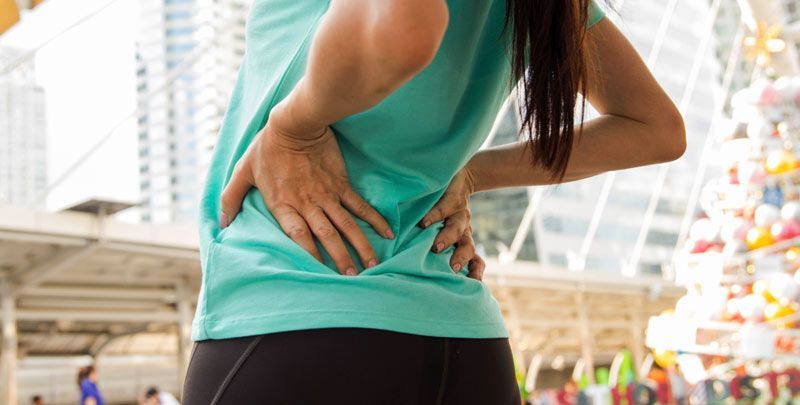The Sedona Method
We create our lives. We may not have control over everything that happens in our lives, but we do control how we react. The goal is to learn to make lemonade out of lemons in any situation. One tool that has helped me do that is The Sedona Method, a book written by Hale Dwoskin.
-Dr. Alicia Armitstead
One of the main ways we create disappointment or unhappiness in our lives is by holding on to limiting thoughts and feelings. It is not that holding on, in and of itself, is inappropriate. Holding on is perfectly appropriate in many situations. I suggest you keep holding on to that car steering wheel or that ladder you are climbing. But have you ever held onto a point of view that no longer served you? Have you ever held onto an emotion from a situation you had no control over?
Have you ever held onto anxiety or tension even after the initial event that triggered it was long over? It is this form of holding on that the Sedona Method helps with. The Sedona Method teaches you not just a philosophy but actual tools you can use to let go of what is no longer serving you. Holding on and letting go are natural processes that occur all the time in life, and the Sedona Method helps bring our awareness to where we hold on too tightly, where we want control and helps us let go in order to be happy.
Why do we hold on? We don't consciously make a choice to hold on to things that are to our detriment. We do it subconsciously when we have an unresolved or suppressed emotion. We suppress our emotions when we don't allow ourselves to experience our feelings fully in the moment when they arise. Through this avoidance, we are preventing our emotions from flowing through us.
Emotions are energy, energy in motion, and e-motion; we need to let them flow through us to transform or dissolve them. In the office, we have a technique called Emotional Release that uses magnets to neurologically stimulate the body to release any emotion that could be stuck in the body. If you feel shame, sadness, or anger that you just can't shake, this neurological reset can help.
The goal is not to get the emotion stuck in the body in the first place, and the Sedona Method is the technique to use to feel the emotion so that it doesn't get suppressed. We avoid certain emotions because they don't feel good. Still, you must be aware of the backlash of not taking responsibility for your emotions, which is worse than actually feeling them. I dare you to feel your feelings and get uncomfortable because I promise it'll feel better afterward, like a hard workout. No one loves a hard workout at the moment, the sweat, the struggle, but afterward, it feels so good, and we like the results. The same goes for feelings.
It's actually natural to feel your feelings. If you have been around children, you know this is true. A 4-year-old has no problem saying I hate you and will never speak to you again, and then just a few minutes later, the child feels and acts as though nothing at all happened. We have lost this natural ability to release our emotions because our parents, teachers, friends, and society as a whole trained us out of it as we got older. Training us to hold on to and suppress them was possible because we were unaware of our ability to release emotions. Every time we were told to behave, sit still, stop squirming, boys don't cry, girls don't get angry, and to grow up, we learned to suppress our emotions. We didn't become responsible for ourselves and our own emotional well-being but for others' expectations of us.
Granted, there are times when suppression can be a better choice than expression. For example, when your boss and coworker say something that you don't agree with, it is not the appropriate time to give them feedback. Habitual suppression is unhealthy and unproductive.
We escape our emotions by watching television, overeating, drinking, using drugs, overexercising, and so many more activities. We use distraction to take our attention off our emotional pain long enough so we can push it back down. Watching television, eating, or exercising in and of itself are fine to do. It's just when you pursue these activities to excess that you must become aware that you are trying to numb yourself in order to escape your emotions. Excessive escape is so prevalent in our culture that it has spawned many thriving industries.
Suppression is one side of the pendulum swing of what we are usually doing with our emotions. The other side of the pendulum swing is expression. If we are angry, we yell. If we are sad, we cry. We put our emotions into action. We have let off a little steam from the inner emotional pressure cooker but have not put out the fire. This often feels better than suppression, particularly if we have blocked our ability to express that when we finally do, it feels better afterward. We just have to be careful that we are expressing our emotions at appropriate times and for the goal of growing and healing, expressing from the heart and not to express to manipulate or hurt someone. Inappropriate expression can often lead to greater disagreement and conflict.
Neither expression nor suppression are a problem in and of itself. They are merely two different ends of the same spectrum of how we usually handle our emotions. The problem arises when we do not control which one is happening. Very often, we get stuck on one side of the spectrum. To get unstuck, we need to find the freedom to let go. Sedona Method teaches us a third alternative called releasing, which can only be done after you feel the feeling. With so much suppression in our society, we never learned the healthy tools to feel our feelings and let go. As you use the Sedona Method, you will discover that you will be able to be free to both suppress and express when appropriate, and you will find that you will more often opt for the third choice, the middle ground of letting go, which the Sedona Method reminds you, is something. You already know how to do it. For example, true laughter is one of the ways that you let go spontaneously, and the health benefits of laughter are well-researched. Laughter truly is a wonderful medicine, and so is letting go. Both will bring a smile and create a sense of inner relief.
As you use the Sedona Method, you will find yourself able to relax even on longstanding issues that you were tearing your life apart and trying to resolve. You will discover that the answers have been right inside you all along. Sometimes, a spontaneous release happens in the middle of an argument. Picture a time that you were in a heated discussion with someone that you care about when the following happened: you were really into it, absolutely certain you were right and justified in your position, when all of a sudden, you caught the other person's eyes and without even trying you connected and something relaxed inside of you, and you could drop your position. You may even have glimpsed the conflict from their point of view. Perhaps you paused for a moment and reconsidered the situation and then found an easy, mutually beneficial solution. The Sedona Method helps you learn how to see more than just your own point of view, which will free you from all sorts of conflicts.
The Sedona Method explores different ways of releasing, and they all have the same result: allowing your natural ability to let go of unwanted emotion and dissipate some of the suppressed energy of your subconscious. The first way is by choosing to let go of the unwanted feeling. The second way is to welcome the feeling and allow the emotion to just be. The third way is to dive into the very core of the emotion. You must understand that we hold on to our feelings and forget that we are holding on to them. We are not our feelings. We should say I feel mad. I feel sad, but instead, we say I am mad. I am sad. We internalize it and then judge ourselves for feeling a certain way. We need to shift our thinking to know that we are in control of our emotions; they don't control us, and we can choose to let go. Just like when we pick up a pen and choose to let the pen go, we can do it with our emotions. It can be that simple.
There are five steps in choosing to let go, which is the first way of releasing.
- The first step is to focus inwardly and think of an issue you would like to feel better about and then allow yourself to feel whatever you are feeling in the moment. No judgment, just feel. It doesn't have to be a strong feeling. Anything will do. Just welcome the feeling and allow it to be as fully as you can. Stick with the feeling. This allows us to step out of our heads and into our hearts where our feelings are. It allows us to be in the moment. Most of the time, our thoughts are either stuck in the past or way out in the future, where we are worried about things that have not happened yet. Rarely are our thoughts about the present moment, which is where our thoughts should be because the time we can actually do anything about the way we feel is in the present moment.
- Once you feel the feeling, step 2 is to ask yourself one of the following three questions: 1) Could I let this feeling go? 2) Could I allow this feeling to be here? 3) Could I welcome this feeling? Yes or no are both acceptable answers. You will often let go even if you say no. No matter how you answered step 2, step 3 is to ask yourself, Am I willing to let go? Be honest with yourself, and remember there is no right or wrong here. Am I willing to let go? If the answer is no, ask yourself, would I rather have this feeling, or would I rather be free? Even if the answer is still no, go on to step 4.
- Step 4 is asking a simpler question: When? This is an invitation to let it go NOW. You may find yourself easily letting go. Remember letting go is a decision you can make any time you choose.
- Step 5 Repeat steps 1-4 as often as needed until you feel free of that particular feeling. You will probably find yourself letting go a little more on each step of the process. The result may be quite subtle at first. If you persist, the results will become more and more noticeable. You may find that you have layers of feelings about a particular topic. The Sedona Method sometimes feels too simple, but it works beautifully. The concept that we can actually choose our feelings, what to hold on to, and what to let go of is something that is missing from everyday life. We are not a victim of life. We can choose how we react to our circumstances.
The Sedona Method explores more than just emotion; it also explores our hidden agendas of wanting to control and manipulate others, and it helps us release that, too. Many times, we aren't even aware of when we try to control others, but we must have the courage to look within and see our hidden agenda and ask ourselves what the underlying feeling is to release so that we don't feel we need to control it. A perfect example is the other day I wanted my five-year-old to wear her grey and pink Adidas outfit, matching pants and sweatshirt with her pink Adidas shoes. She put on the pants, but there was no way that she was going to wear the matching sweatshirt, and as I tried to talk her through it to make her wear it, I could feel the tension in my body and my voice get louder to push my agenda of the perfect outfit. Her reaction to my raised voice was that she resisted even more. As I was thinking of another way to control her, I suddenly stopped and saw what I was doing. I reminded myself that I actually don't care what she wears to school at all. My pride isn't in the perfect outfit but in her choosing her own outfit as a form of self-expression and giving her that freedom, and in remembering this, I could let it all go.
Besides controlling, we get in trouble when we want to be controlled. When this is motivating us, we long to have someone else to blame or take responsibility for our lives and feelings. We want someone else to lead, and we follow. The Sedona Method teaches a written release on letting go of both control and wanting to be controlled, but you can also apply the five steps to the feeling of control. Can I welcome the sense of wanting control? Can I allow it to be released? When can I release it? And so on.
There are three other main feelings of want that The Sedona Method dives into the desire for approval, security, and separation. When it comes to wanting approval, we want it because we don't think we have it. Therefore, we act in ways designed to help us get it, but actually, it is self-sabotage because it won't make us happy. If we think we don't have approval, we are more concerned about what others think of us, and we give our power away to please others. We may say yes when we really want to say no. We may allow others to give us the runaround or allow them to control us in order to get them to like us. We may also take on too much responsibility because we think it will make us popular. When we want approval, we don't feel like we have love and we need to do something in order to get it.
When we want security, we feel like we don't have it. We approach life as though it's a battle for survival. We see everyone as an enemy. We may often feel and react to even the smallest changes or decisions as if our lives are threatened. Because of this, we avoid change and avoid taking risks, even if that means giving up success. We may avoid confrontation even when it's necessary. Every day, we wake up expecting the next disaster. You can recognize wanting security by having a sense of being threatened, uneasy, in danger, on guard, or impending doom. In the extreme, it's paralyzing fear, and we feel like we are going to die. We also feel like we will do anything, and I mean anything, to feel safe.
I know it sounds weird, but as we let go of wanting security, we feel safer and more secure at home wherever we are without feeling like we have to achieve safety at others' expense. The feeling of wanting to die is because without feeling safe, we feel life is too much. We are afraid of living, so we want to get it over with. We approach life like a minefield. We are our own worst enemies. Using the Sedona Method and letting go of wanting to die, we will feel safer, more secure, and at home in life. We are willing to live.
The last want is the desire to be separate. We feel that we don't want to belong or that we need to maintain a separate identity. Therefore, we act in ways designed to help maintain a distinct identity, even if it's unhealthy. We want to prove how we are different, better, and special. We often give the message to the world, "Leave me alone'. Wanting separation can have a strong feel to it, or it can be very subtle. At its strongest, we reject or push people away, never allowing someone close. But we need to find a balance because there's also the want of oneness that, if it goes to the extreme, looks like codependency and is unhealthy as well.
We want to belong so badly that we are desperate to do anything, and we lose ourselves in a relationship. We avoid feeling lonely at any cost. Yet the unity we seek, the oneness we think we need, is already effortlessly present, so this wanting needs to be balanced, and the Sedona Method is good at acknowledging the feelings that you may have not already been aware of that you had and then letting them go.
Besides actually feeling our feelings and then releasing them, the Sedona Method teaches us how to set and attain goals. The process not only helps you discern which goals are ones that you truly can and should pursue, it will also help you to let of of goals that are inappropriate.
Using the below steps you can tap into your feelings about the goals and any self sabotage you aren't letting go of to obtain your goals.
When you hear the word goal, does it conjure up strong positive or negative feelings? We live in an extremely goal-oriented society, yet most of us have mixed feelings about setting and attaining goals. I think it's because we have internalized so many shoulds and should-nots that we are confused about what we actually want. Plus, work may have impossible goals for you, or maybe you feel your friends and family think only certain goals are acceptable. We also have diverse experiences when striving to achieve a goal: some good experiences and some not-so-good experiences, maybe even some frustrating or painful ones.
Some goals we have pursued with our whole heart and given up on, while other goals came easily. There is a spectrum of feelings that make goal setting so confusing. To help get rid of that confusion, the Sedona Method has you do some releasing around your emotions about goal setting by allowing yourself to feel however you feel in the present moment about goals. Welcome the feeling as best as you can. Allow it to be there. Then could you allow yourself to notice from which want it's coming approval, control or safety? Could you let that want to go?
The next step is actually crafting a goal statement, which is something you don't realize is so important until after you learn how to do it. Once you craft it, write it down in a place where you will see it daily. Studies of groups of successful people have shown that those who write down their goals are more likely to achieve them than people who only think about them. Words are energy, so how you write it is very important. Make sure you write it in the present tense as though it is already achieved. Phrase your goal in the positive, writing what you want, not what you don't want. Your goals should also feel realistic and right for you. Also, make sure to include yourself in the goal statement. Instead of the goal being the house is clean, change it to I easily clean the house.
After writing down the goal, see if there are any emotional blocks to achieving it. Ask yourself which want underlies it. Does the goal come from a sense of wanting approval, control, or security? It can be more than one wants. Then, release the wants that are stirred up in the present moment about any feelings you have. Could I let go of wanting approval, control, or security? Keep releasing different layers of wants as they come up during the day and during the next few weeks. You know you have released enough when you feel excitement, acceptance, and/or peace about your goal and are no longer worried about it.
The next part of the goal process is the action steps process, designed to release more of the inner limitations and behavioral barriers that prevent you from taking action and effectively pursuing your goals. Thinking about your goal, you will then write what actions you think you need to take to achieve the goal and how you feel about doing it. Notice any feelings that need to be released. It's amazing what comes up as you do this process that you didn't even realize was there. Maybe the goal is 'To allow myself to easily achieve and maintain my ideal body weight, and the action steps are going to the gym, eating well, and stopping eating snacks. When going to the gym, you realize the feeling is an embarrassment because you don't like exercising in public, and the want is control, so you go through the questions to release the control.
Can I welcome the sense of wanting control? Can I allow it to be released? When can I release it? And so on. When starting to eat healthy, the feeling that comes up is resistance. I just simply don't want to, which is a want of control as well. So I release that wanting as well, and then when it comes to stopping eating snacks, I realize that the emotion behind it is grief that I didn't even know I had, and so the wanting behind that is security, and I release that. In releasing this way, you start to think differently, and thoughts become beliefs, and beliefs become actions. So, if you notice you aren't able to do what you need to do to live a healthy, happy life, then definitely try the Sedona Method.
If you want help in releasing subconscious beliefs, like not feeling worthy enough, too afraid, or needing help with forgiveness, we have a technique we do in the office called Psych-K that uses techniques to help individuals transform these types of beliefs. It uses techniques such as visualizations, affirmations, and muscle testing to help reprogram the subconscious mind to create desired outcomes.
I love how the Sedona Method teaches tools to actually feel your feelings and release them. In choosing what emotions to let go of and what goals to set and how to go after them you are empowered to not sweat the small stuff and create happiness. When feeling stuck we can help you with Emotional Release and Psych-K. We all want happiness and these techniques are a way to help you emotionally heal and create happiness.












